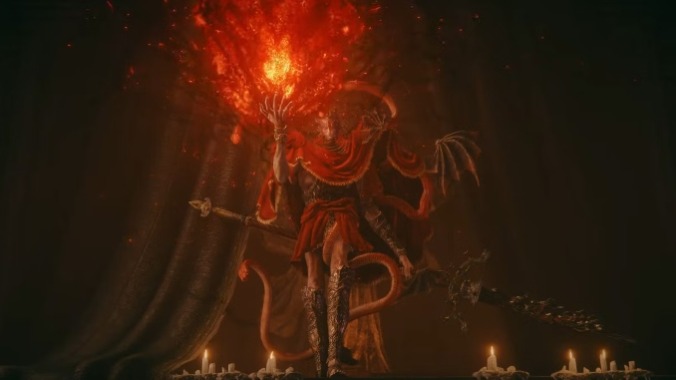
The release of Shadow of the Erdtree has unleashed another wave of “discourse” around FromSoftware and Elden Ring, and the usual suspects are back in town. Luckily, I’m here to definitively answer these questions for all time. Is Elden Ring: Shadow of the Erdtree worth checking out? Yes, if you liked the base game. Is it too hard? No, not as long as you pick up Shadow Realm Blessings. Should there be difficulty settings for those who want them? Yes, although this sort of already exists via Co-Op and Spirit Ash summons, even if the former is a bit arcane. Are these bosses any good? Well… let’s get into it.
While Elden Ring has reaped quite a bit of praise, a more divisive element, especially among longstanding Souls-heads, is that many of its bosses feel like they go overboard. Specifically, compared to the studio’s previous big bads, like the ones in Demon’s Souls or Dark Souls, many of these new adversaries dislike giving you a chance to hit back, dishing out merciless attack sequences with few gaps. Although this style of aggressive foe paired perfectly with Bloodborne’s speed and Sekiro: Shadows Die Twice’s parry, in Elden Ring, it can sometimes feel like you’re not given the right tools to succeed, as the Tarnished’s meager dodge roll can’t keep up.
Shadow of the Erdtree is weird because some bosses solve this problem by operating at a pace that feels frantic but fair, while others exacerbate this design flaw to new extremes, including the profoundly disappointing final boss. It’s clear the expansion aims to escalate the difficulty of the core game, especially if you haven’t been collecting your Scadutree Fragments—seriously, do that—and as a result, many of these enemies hit hard and are absolutely relentless. Still, even with these occasional difficulty spikes, I found the majority of these encounters to be enjoyable, with a few home runs. Breaking it down numerically, I despised three of these fights, thought another three were okay, and loved the top five.
So, anyway, let’s attempt an ultimate act of hubris in ranking these bad boys. For context, this order isn’t only determined by how engaging they are to fight but is also based on their aesthetics and narrative theming. Also, before you get the pitchforks out, please consider that differences in build, weapon, level, and most importantly, the number of Scadutree Fragments you’ve collected can dramatically impact how a scuffle goes—in other words, a boss that clicked with my strength and faith build might have been miserable for your entirely melee-focused character. Additionally, a new patch just dropped that rebalances how the fragments work to make the early game easier, so that will be another differentiating factor between my experience and those who played it later. For context, most of these are from the perspective of someone trying to roll through these encounters unless they became irritating enough that Mimic Tear and other more devious strategies needed to come out (that said, no shade at anyone who uses any means necessary from the jump). Only bosses that drop Remembrances will be considered for this list, with one exception. Without further ado, let’s get into it.

11. Commander Gaius
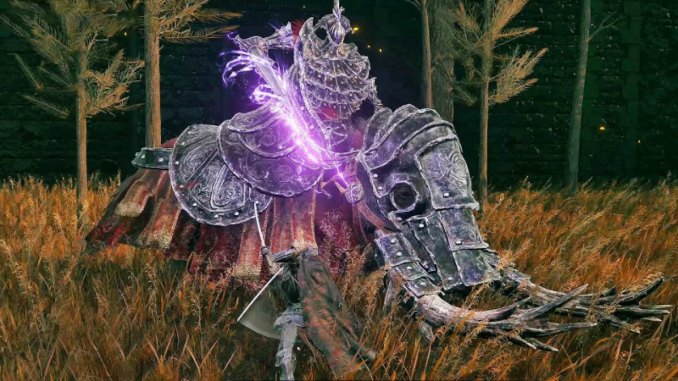
Tucked away after one of the Shadow Keep’s many optional exits is Commander Gaius, the right-hand man of Messmer the Impaler. If there’s a single, simple reason why I don’t like this fight, it’s that jousting against him on horseback is not particularly fun, and it seems this is what you’re “supposed” to do in some sense. Gaius has a lot of speed, range, and tracking on his attacks, and since Torrent doesn’t get invincibility frames when he dashes, you’ll probably get clipped and sent into the dirt if you try and jockey around these strikes. However, if you face him on foot, he’s the epitome of the hyper-aggressive jerk, unleashing lengthy combos with few gaps. It also doesn’t help that his moveset is a less flashy version of Radahn’s gravity magic, making him visually bland. Compared to many of the mighty adversaries on this list who seem like they could cleave a planet in two, Gaius comes across as more of a mini-boss than anything else, not much different from a Tree Sentinel or any number of other knightly foes. His greatest saving grace is that there are a few interesting story tidbits here—I enjoy his camaraderie with Messmer over being similarly spurned, in Gaius’ case due to being an albinauric (artificially created humans who are disliked by the Golden Order because they’re “untouched by the Erdtree’s grace”). Overall though, Gaius is a chore to fight and visually bland, lacking the aesthetic strengths that slightly assuage the other two stinkers on this list.
10. Promised Consort Radahn
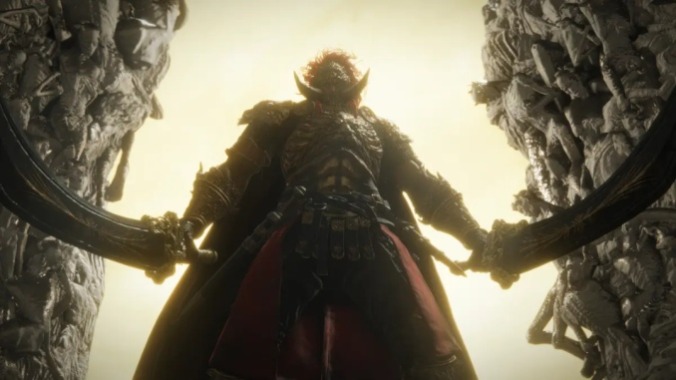
Bear with me for a bit here, as there is a great deal to unpack, from how this encounter embodies Elden Ring’s “bad boss design ethos” to what’s happening from a storytelling perspective. Let’s start with the game part. In his first phase, Radahn is pretty reasonable. The spinning divebomb he opens with is visually slick, well-telegraphed, and lets you get a few smacks in—a good start. The rest of his moves during this section are reasonable, and while these strings look similar at first, eventually, you’ll be able to intuit the proper direction to roll and punish him accordingly. It’s also nice that most of these sequences end in gaps, granting time to get some slashes in. But then there’s the second phase, where Miquella, the central figure of Shadow of the Erdtree, fully enters the picture.
Dear reader, I gave this one the benefit of the doubt. I beat my head against this section for hours, failing to dodge through divine blasts as I hoped things would eventually click and I’d see why I was faceplanting. While I’m sure the true sickos will calculate precise angles and timings to dodge through this intricate weave of heavenly strikes, due to the speed of these blows, giant hitboxes, tiny counterattack windows, and massive punishment for mistiming anything even slightly, it simply doesn’t feel like this game’s core systems jive with this enemy. Many of these moves are difficult to dodge due to their speed and range, and the spaces where you could get some smacks in during the first phase have been filled in with holy explosions. Essentially, the core issue is that for certain strings, you’ll successfully roll through an initial attack, only to get clipped before you can perform a second dodge, and while I don’t doubt there are precise directions you can dive to avoid this, figuring all that out felt particularly fussy given the massive damage you eat if you screw up. In the end, I took a two-prong cheesy approach: Mimic Tear combined with the same technique that killed Radahn the first time, Scarlet Aeonia. Although taking down this demi-god with scarlet rot was narratively gratifying, the second phase was so poorly tuned that I found little satisfaction when I finally slayed this foe.
It also doesn’t help that this Radahn reveal feels more than a little hackneyed from a narrative perspective, coming across as a fan-servicey gesture meant to capitalize on how popular this character is in the community rather than something that fits with the story’s direction. After hours of build-up to our meeting with Miquella, this turn comes out of left field, even if you picked up on how defeating Radahn was mandatory to begin this expansion or figured out some of the clues from the optional questlines (which honestly make it seem like Mohg is going to be revived instead).
However, I’d say there are some saving graces here, such as how this battle is right up there with the studio’s best work aesthetically. From the unbridled celestial wrath unleashed once Miquella finally makes their debut to the otherworldly gate that looms in the background, this struggle hits with mythic grandeur. I like that Miquella’s ghostly, four-armed appearance mirrors Ranni, another Empyrean who gave up their body to challenge the Golden Order. Tying into this, things become a bit more interesting once we get some elaboration on why Radahn is here and what the hell is going on: since Radahn was seen as the mightiest demi-god, Miquella wanted him to become their righthand man. They were willing to do anything to make this happen, including sending their sister to kill Radahn so the big guy could be reincarnated and piloted like a meat puppet without will, which is what we see play out in this fight.
While I don’t think the DLC’s main storyline comes together, this last stretch does successfully convey how far Miquella has fallen. Here, they’ve weaponized their supernatural ability to charm others, forcing you to kill nearly every friendly character you met on this journey. This power to persuade even manifests in the final fight, as Miquella can sweet-talk you into becoming an adoring underling (“HEART STOLEN,” the Game Over text reads). Still, even with its impressive presentation, this battle is a complete nightmare and works as a shorthand for Elden Ring’s greatest failings regarding boss design, resulting in another blindingly fast opponent that might work if this game had faster defensive mechanics, like Sekiro. Hopefully, this is the last time we see this kind of mismatch between enemy attack patterns and core systems from the studio, and they get back to what made final bosses like Isshin, the Sword Saint so masterful.
9. Bayle the Dread
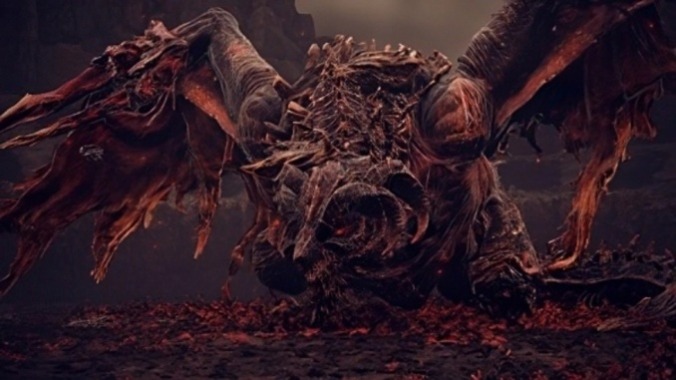
Besides the previous entry on the list, I have a hard time thinking of many FromSoftware bosses who are both as awesome to witness and as frustrating to fight as Bayle. After plenty of foreshadowing, Bayle the Dread drops from the sky like a meteorite. This dragon hates you for simply existing, best embodied by his violent movements and how he tries to gore you with a protruding bone from his mangled wing. And unfortunately for you, this battle is as difficult as it looks, largely because the only thing that hates you more than Bayle is the camera, which sticks to his underbelly if you try to lock on. He’s super aggressive, moves fast, hits harder, and that’s just the first phase.
Once you arrive at the midway point, he summons spectral wings and launches a barrage of projectiles that feel like Armageddon. Visually, it rips. What makes it better is if you summon the Captain Ahab-riffing Igon, he shoots off a procession of campy lines about how he’s finally going to harpoon his white whale, delivered with delightful scenery-chewing gusto that put a smile on my face even as I got flattened for the dozenth time.
Fundamentally, though, the issue with this bout is that Elden Ring’s dragon battles feel designed to be handled on horseback, and since you can’t summon Torrent here, the camera is too low to the ground, frequently clipping into the creature. When combined with his overwhelming aggression, this sequence felt finicky and unsatisfying. At first, I tried to take specific preparations, such as wielding a drake-killing sword, but this didn’t fit great with my stats, so I ended up using the same cheesy approach as with Radahn: scarlet rot and Mimic Tear. It felt even less rewarding the second time around. I never, ever want to fight this guy again, but the killer presentation means I’ll probably watch clips of the encounter on YouTube, which is more than I can say about Gaius.
8. Scadutree Avatar
![]()
As alluded to with Gaius, the alternate paths through the Shadow Keep lead to several fascinating discoveries. One of these finds is the Scadutree Avatar, the personification of the gnarled landmark that hangs over this story. You enter a golden swamp and come upon what appears to be a sunflower, but as you approach, it turns around and starts to throw hands (or stalks, I suppose). As you land your first blow, you’ll likely notice it takes a larger-than-usual chunk out of their health bar, making you wonder if you’re over leveled or if this adversary is strangely weak. That is until you “slay” them, and another Avatar pops out of the tar-like sludge.
Aside from that clever twist (which admittedly doesn’t hit as hard as when Sekiro did the same thing with the Guardian Ape), this battle is solid, albeit a little on the simple side. Their big, sweeping strikes are easy to see coming and leave ample room to pummel the creature’s giant head, making things seem almost too fair. Their moves have some decent variance that grants flavor, such as when they repeatedly zoom around the map as if on wheels or swipe with barbs that cause bleed build-up. That said, this showdown wasn’t as outright flashy as many others, was a little too easy as I bested it on my second try, and I frankly don’t grasp the narrative significance of what’s going on here (did I fully kill the Scadutree and why do they drop Miquella’s abandoned rune?). Even by FromSoft’s standards, it is very hard to parse what exactly is going on with the Land of Shadow’s giant tree, and this fight’s stakes and gravitas suffer due to that lack of clarity. Maybe that aspect will improve once the lore fiends get at it, but even having read every item description I came across, I’m at a loss. Overall, this boss was fine, but for better or worse, it didn’t leave as much impact as most on the list.
7. Divine Beast Dancing Lion
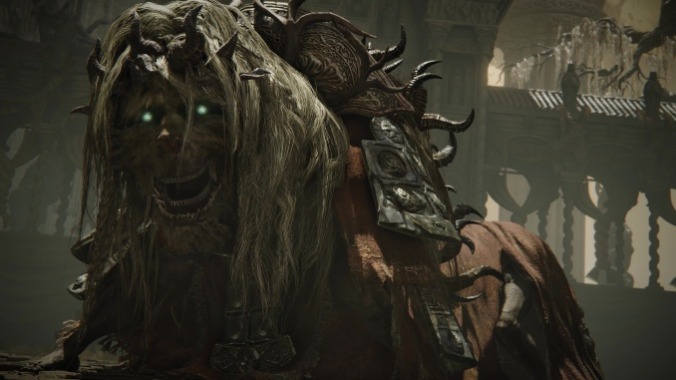
This was the first boss that really throttled me. I hadn’t collected many Blessings yet, and on top of this, the Dancing Lion has a relatively tough moveset. Between their speed and relentlessness, I found myself getting demolished by their basic strikes, let alone their more troublesome maneuvers that incorporate changing elements, like ice, wind, and electricity. While I didn’t particularly enjoy my first victory over them, when I found a second Dancing Lion tucked away in a corner of the map, I had a much better time as I more fully engaged with their moveset and discerned the gaps in their pressure. Overall, they fall a little too much into the hyper-aggressive bucket, but not in a way that’s insurmountably annoying.
And while they flirt with the frantic mode that defines the more annoying enemies in this DLC, man, these animations are really good. The Dancing Lion pounces with surprising grace despite its bestial appearance, and you eventually find out why: this isn’t a lion at all, it’s two guys in religious garb performing what was once a ceremonial dance, seemingly inspired by lion dances from Chinese culture. We learn that when the Golden Order invaded the Land of Shadow, putting its native people to the sword, this ritual was turned into a tool of war by necessity, another cruel, tragic touch that further fleshes out the horrors committed in the name of the Erdtree. Overall, I enjoy this one’s theming and look quite a bit, and even if their aggro moveset and relentlessness were a bit of a turn-off, they didn’t feel as unreasonable as some of the previously mentioned adversaries.
6. Metyr, Mother of Fingers
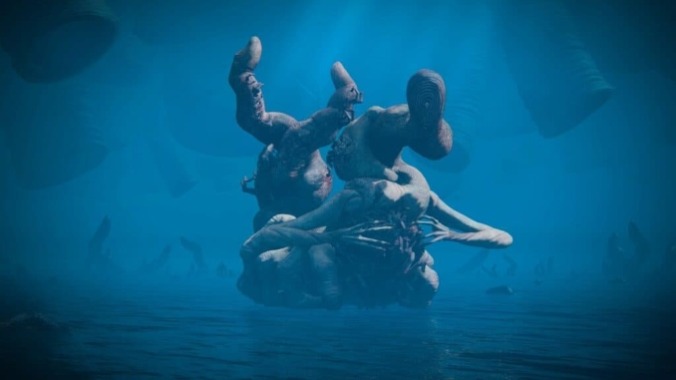
One of the great charms of FromSoftware’s games, especially Elden Ring, is the sense of traveling down extended detours that suddenly give way to momentous discoveries. After finding a creepy little man in a church, Count Ymir, in an optional corner of the world, you go on an even more obscure side quest involving finger-themed ruins. You eventually return to the church, where Ymir gives you a map before seemingly disappearing. However, if you decipher this document and return to push aside his empty throne, you’ll find a ladder that leads to a subterranean cave. Journey to the end and sound a finger-shaped bell, and you’ll be teleported to a limbo world where the Eldritch abomination Metyr, Mother of Fingers, awaits.
While this game has many Lovecraftian touches, especially considering the entire narrative is instigated by cosmic entities locked in a proxy war (literally referred to as Outer Gods), this scuffle doubles down on this undercurrent as Metyr summons black holes, fires laser beams, and the soundtrack churns with cosmic unnaturalness. As for the fight itself, it’s quite reasonable, and Metyr has some legible windups and long recovery windows that keep things from being too overwhelming. They’ve got a good mix of projectiles, punches, and dimensional rift-tearing blasts that keep you on your toes. Again, things felt a touch too easy, as I beat them on my second attempt, but as always, results will vary depending on your build. This battle is pretty good, but it’s the visual flourishes and dramatic build-up that make this encounter feel suitably alien.
5. Romina, Saint of the Bud
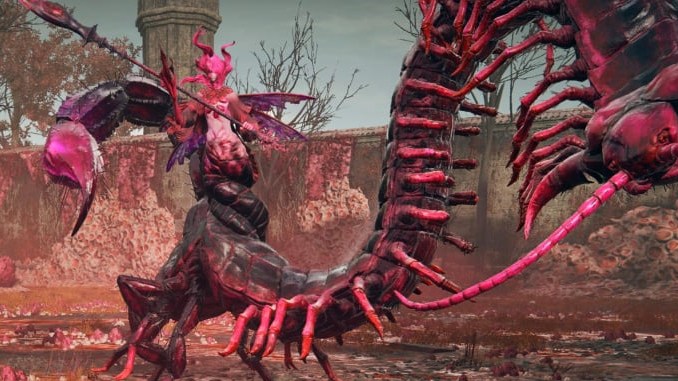
Romina is a satisfying opponent in just about every regard: she offers a well-balanced, reasonable fight with neat mechanical touches, and while not as visually ostentatious as some on the list, she has a fairly striking design as well. Between skittering body horror and smooth spear slashes, she maneuvers in a way that’s both graceful and unsettling, even if this is admittedly a cliché for femme-coded monsters. I particularly like how you need to divide attention between her stinger, mandibles, and polearm-wielding torso, as minor tics from each indicate which kind of blows are on the way. Beyond just spear swipes, there are moves where she rolls into a ball, sends blossoms of scarlet rot your way, and slams you with rows of writhing legs.
There is also a nice variance in pace here, whether it’s her floating stinger stab that dares you to flinch as she methodically takes aim or quicker strikes that come out at a moment’s notice. Depending on the attack, you also have to worry about scarlet rot build-up, adding a status ailment management angle that introduces more complexity to the encounter. That said, in some sense, it’s a little strange she’s one of the four mandatory bosses on the list, as she doesn’t have as much explicit narrative relevance as the others. Thankfully, her story overlaps with the Golden Order’s obsession with stamping out rival ideologies, making her inclusion feel more cohesive than it would otherwise. Overall, though, she’s a well-rounded adversary who’s creepy, cool, and, despite hanging out in a pool of scarlet rot, not too toxic.
4. Rellana, Twin Moon Knight
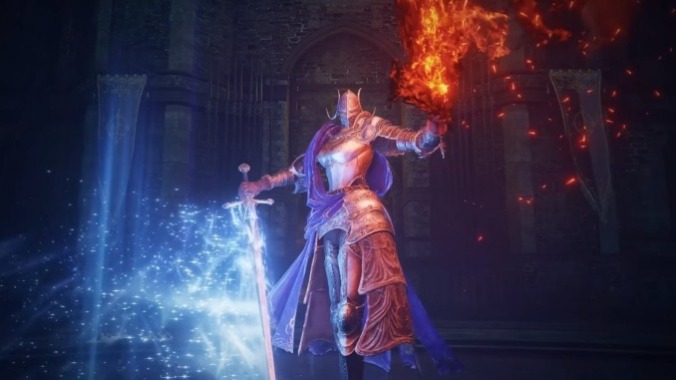
I’m guessing this placement might be a bit controversial, considering how brutal I imagine this encounter is for certain playstyles. The first few times I faced Rellana, I was torn to ribbons by her dual greatswords as a flurry of swipes left little room for error. I thought I was in store for another unpleasant slugfest that embodied the whole “there’s no window to counterattack” phenomenon where foes behave less like they’re a videogame enemy programmed to give you a fighting chance and more as if they’re an actual warrior trying to end your life. However, this encounter took on an entirely different tenor when I suddenly remembered something important, “Hey, I’m a hybrid build, too.” When you engage Rellana on her own terms, using a combination of melee attacks and long-range spells (or incantations, in my case), this fight suddenly becomes a blast. At full screen, she’ll fire off well-telegraphed sorceries with her blade, including a screen-filling slash that feels slick to dodge through. Unlike many big bads, she doesn’t close the gap as aggressively, meaning she’ll often partake in an honorable spellcasting duel if you start hucking lightning bolts (or your choice projectile) as I did.
And, of course, she is also stylish as hell, rocking the Pontiff Sulyvahn magic and flame drip in her second phase. The battle’s climax comes when she unleashes spectral moons that crash into the arena, sending shockwaves you need to leap over to avoid getting caught in a devastating combo, a sequence that’s as visually eye-popping as it is rewarding to evade. Despite not learning her backstory until after the fact, the item description for her signature move contains a tragic bit of writing that gestures at her close relationship with her sister, a certain Carian Queen. Rellana is another person sucked into Messmer’s story, abandoning everything, including her royal status, to join him in exile and infamy. It would be romantic if it weren’t for all the, you know, mass murder.
3. Putrescent Knight
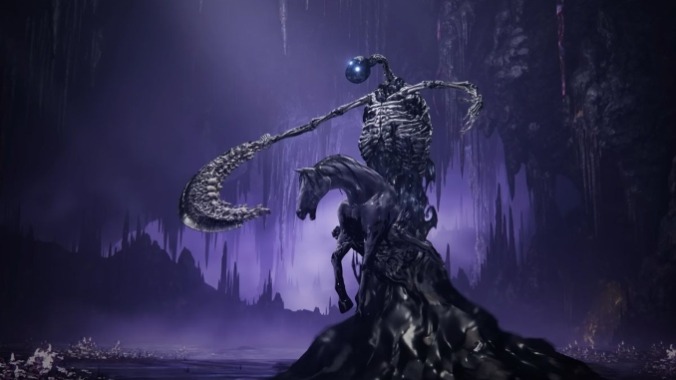
Listen, I acknowledge it may seem a little silly to put Putrescent Knight, a freaky guy who lives in a hole, above many of these visually resplendent, larger-than-life adversaries who have much more significance to this setting, but the fact of the matter is that I simply had a blast battling this ghostly horseman. First off, he’s another foe that benefits from the hoops you have to jump through to find him: travel through a random valley to arrive at the most jaw-dropping sight in the expansion, the aptly named Cerulean Coast and its fields of bright blue flowers, drop down a big ass hole, fight through a procession of statues that shoot lasers out of their eyes who are annoying in that iconic “Anor Londo archers” kind of way, and then fall into an even bigger hole, one that would normally kill you but in this case, puts you in the middle of a purple swamp lined with lilies. After a brief beat, Putrescent Knight comes charging around the corner, a rare horseriding enemy that isn’t frustrating as hell to jostle with while unmounted.
And beyond the thrill that comes from finding this guy, it also helps that Putrescent Knight has some of the most well-designed attack sequences in the expansion. His sloping strikes force you to dodge at a specific rhythm as he mixes up slow and fast slashes. The best example of this is what I call the “Horse Combo,” where he spins at you with his guillotine blade, sends his oozing horse at you, comes twirling at you again, sends the steed your way a second time, and then launches at you a final time, leaving room to bonk him as he gets back on his mount. Dodging this gracefully choreographed tag team never failed to make me grin, and these blows come in at a perfect tempo that’s tight but manageable. Throw in well-telegraphed flame blasts that you need to leap over (man, I love every boss that forces you to jump), and you have a fight with satisfying variance in timings and rhythms. Sure, his character design is a little simple—similar to Gaius, he sort of looks like an opponent you’d come across in the open world—but I enjoy his goofy, lopsided glowing eyes and the fact his horse is formed out of this swamp’s sludge.
Oh, and it also helps his case that he guards one of the most interesting characters in the expansion, St. Trina. If you drink her poisonous nectar five times (which kills you every time you do), she offers much-needed context for Shadow of the Erdtree’s narrative. She, who was once part of Miquella, believes that this would-be-deity has given up far too much of themself in their quest for godhood and that you’d be doing Miquella a favor if you stopped them from ascending. While it’s frustrating that his expansion doesn’t divulge much about its central figure, this tidbit grants important context that ties in nicely with how low they’ve stooped by the ending sequence. As the Saint of Sleep frames it, the “kindly” Miquella has simply given up too many things in their quest for power, like their ability to love as embodied by St. Trina, and if given the Elden Ring, would be just as cruel and highhanded as the scions of the Golden Order. That’s a pretty big bomb from an area guarded by a bony equestrian—good job, Putrescent Knight!
2. Midra, Lord of Frenzied Flame

The award for the saddest, most pathetic dude in this expansion (and its tough company) goes to Midra, who has endured eons of torment as they’ve staved off the temptation to become the Lord of Frenzied Flame. As mentioned several times, many of these bosses can only be reached through obscure paths, and considering you have to roll through a random wall to find this one, they take the cake in that regard. After arriving at the Abyssal Woods and ignoring many warnings, including unkillable guys that look like they’re from Bloodborne, you come across the master of this estate, a man pierced with a barbed blade designed to inflict agony. After you enter his room and smack him around for a bit, he finally snaps. Unable to endure more punishment, he succumbs to the temptations of the Outer God of madness and, in a grisly sequence, unsheathes the sword embedded in his skull, creating a monster.
Once transformed, this adversary deftly straddles the line between punishing and just, embodying FromSoft’s games at their best. His strikes have big windups but hit like a truck if they connect, and some nice changes in tempo keep you on your toes. I particularly love how his graceful movements mimic a flickering flame as he twirls and dances while wielding the weapon that tore into his flesh for an age. And in his second phase, which starts with a health-deleting blast you can only avoid by sprinting away at full speed, he kicks things up a notch without becoming obnoxious. Here, dodging his ranged blasts goes from being a suggestion to a necessity, and although the margin for error is small, gaps in his offense make this bout challenging but reasonable.
Through it all, the battle conveys that you’re against an enemy that must be stopped at any cost—while the religious dogma of the Golden Order and hornsent is a blight on The Lands Between and Land of Shadow, it’s clear they were right to be afraid of this madness-provoking flame. As Midra’s head is replaced by a ball of gleaming insanity and the stage catches fire, we can see the entire world will become kindling if we don’t stop him. Add in the melancholic detail that this man endured untold suffering to contain this force at the behest of a departed loved one and that you, an irritating Tarnished, were the straw that broke the camel’s back, and you’ve got the type of tragic aura that defines so many of these encounters. Midra’s punishing but fair attack sequences, imposing aesthetics, and general gravitas make him an excellent addition to the FromSoftware canon.
1. Messmer the Impaler
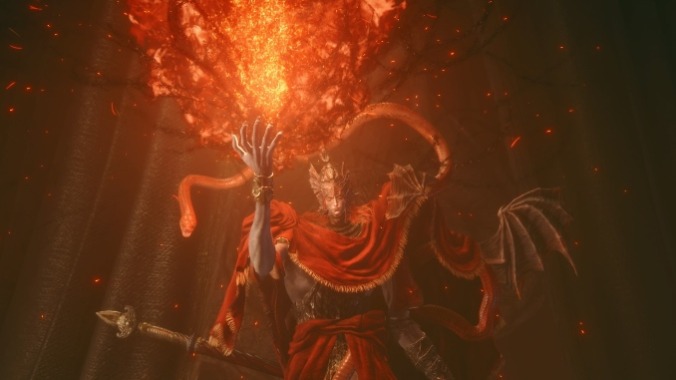
As the poster boy for Shadow of the Erdtree, Messmer the Impaler was the subject of quite a bit of hype and speculation among Elden Ring nerds. Thankfully, he lived up to this scrutiny. After scaling the Shadow Keep, we finally encounter Messmer, whose reputation as a butcher proceeds him. He carried out a crusade at the behest of his mother, Marika, until eventually being banished to a forever war in a distant land. The reason for his exile is that he was born with the power of a snake, something seen as a curse by the Golden Order.
Through his first sequence, he’s lithe but not overbearing, and aside from one irritating move that has shades of Malenia’s infamous Waterfowl Dance, his combos feel avoidable and his leaping stabs leave time to get a slash or two in. These strikes convey his snake motif through springy, piercing lunges that are quick but have enough windup to make them feel reasonable. However, it’s when he fully unleashes his ophidian powers that he cements himself as a near-perfect amalgamation of larger-than-life visuals and tough-but-fair attack patterns.
As he removes his fake eye, which was a seal placed by Marika to suppress his powers, he becomes even more snake-like, summoning a massive serpent that reels back before springing forward. Visually, I love how this combines the feeling of dueling a foe close to your size while still conjuring the grandiose. There is a great alternation in pace as Messmer switches between fast, coiled movements in his humanoid form and lumbering swipes as a gargantuan snake, and it’s so damn satisfying to dodge the pouncing movements of this huge creature and deliver some crunchy hits. Altogether, it’s exactly what I want out of this studio: a challenging fight that rewards the time and energy invested in toppling a mythic foe.
And, of course, it wouldn’t be a FromSoftware boss without that last hint of tragedy. Messmer’s resentful dying words drive home that despite doing everything his mother wanted of him, he’s still been abandoned. Marika’s war machine marches on, and she’s not above using her own children as kindling for the fire.
Elijah Gonzalez is an assistant Games and TV Editor for Paste Magazine. In addition to playing and watching the latest on the small screen, he also loves film, creating large lists of media he’ll probably never actually get to, and dreaming of the day he finally gets through all the Like a Dragon games. You can follow him on Twitter @eli_gonzalez11.